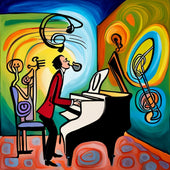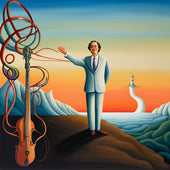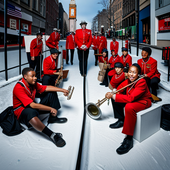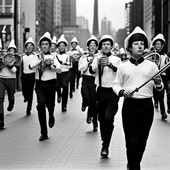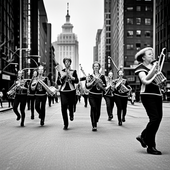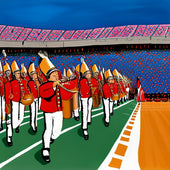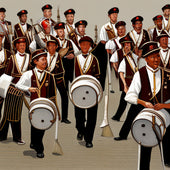Teaching the band Rehearsal Etiquette is easily the most straightforward concept I glossed over as a young teacher.
At your very first rehearsal, teach the concept of "standby" (and it's okay if you have a different word for it!). Explain to your band what this position is: feet are at "attention" (or "set" or whatever you want to call it). Instruments are at a relaxed and ready position that is NOT "carry" or "attention."
|
"Standby" should be a very clearly defined, stationary, non-moving position that is far more relaxed than "attention" or "set." "Standby" should be a very comfortable position with no tension, stress, or physical engagement that allows the band to easily attune to any instructional or corrective instruction.
When the band is wholly at "standby," they should be readily prepared to receive information from any instructional staff member. |
"Set" should be the last definition that sets the band up to be prepared for performance. From the "set" position, the band should be able to quickly prepare for and begin the next rep, including horn moves and visuals/choreography necessary to get the next phrase on the move.
Following the execution of the rep, whoever runs the rep should conclude the rep with a command along the lines of "check" (meaning: look around without making any movement to determine if you're in the correct place), followed by "adjust" (making MINOR movements to shift your body to a place where you match the inherent visual placements suggested by the rest of the ensemble).
At this point, the first feedback should come from whoever is in the tower. After that, field-level feedback is next (while very subjective, a generally accepted flow is directors, followed by instructors, followed by staff - related to each student on the field). The most crucial detail is that every staff member waits for everybody "more important" than them to give feedback first.
While the exceedingly controlling band director would want to set up the rehearsal process to let the director call the rep instructions, say "Set," followed by "Check," "adjust," and "standby," this really ends up being an inefficient process to rehearsal.
You, the director, feel you are essential, and the students care about everything you say. Unfortunately, you are wrong.
If you have your drum major be the voice who defines the rep, followed by calling "set," "adjust," and "standby," you are separating rep directions from performance feedback. While your students may only partially engage with the voice telling them to stop moving and prepare to perform, they will instead react to a different voice that tells them what they did incorrectly.
Sure - separating the instruction from the feedback might take more time, but in the end, your students will deliver far more consistent results.





